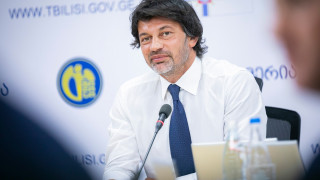On 30 December 2014, as a guest of the talk show, Archevani, the Deputy Prime Minister and Minister of Energy and Natural Resources of Georgia, Kakha Kaladze, declared that a number of significant projects have been implemented in the field of energy and seven new hydroelectric power plants have been opened.
FactCheck obtained information regarding the hydroelectric power plants which were opened in 2014.
The construction of Shilda HPP, which is located in the village of Shilda, was launched in 2012 and the hydro power plant (HPP) was opened in 2014. The capacity of the plant is 5mWh and it is able to generate 30 million kilowatts per hour annually. USD 5.5 million was invested in the construction of the HPP which belongs to the Georgian Energy company.
Bakhvi HPP-3, located in the village of Mtispiri in the Ozurgeti district, is a joint project of the international holdings Kusto Group and the Silk Road Group and implemented by Bakhvi Payer LTD. The construction of the HPP was launched in 2011. The total amount of investments attracted was USD 13.5 million. The capacity of the plant is 9.8 mWh and it is able to generate 38 million kilowatts per hour annually. The HPP was opened in September 2013.
The construction of Paravani HPP was funded by the European Bank for Reconstruction and Development in the amount of USD 52 million with the work on its construction having started in 2011. The capacity of the HPP is 87 mWh which means that it will be able to generate 410 million kilowatts per hour annually. USD 200 million was invested in the project sponsored by Georgia Urban Energy. The Paravani HPP is scheduled to open at the beginning of 2015.
Larsi HPP, which is located in the Kazbegi district, has a capacity of 19 mWh and is able to generate 100 million kilowatts per hour annually. The HPP is of a derivative type[1] and its construction was launched in 2011. USD 20 million was invested to implement this project. Larsi HPP was opened in 2014.
The investment value of Kazbegi HPP equals USD 2 million and it has a capacity of 6 mWh which enables the HPP to generate 30 million kilowatts per hour annually. The construction of the HPP was launched in 2011 and it was opened in 2014.
The construction of Akhmeta HPP, located in the Municipality of Akhmeta, was launched in June 2013 and the HPP was opened in 2014. It has a capacity of 9.4 mWh and will generate 500 million kilowatts per hour annually. The project’s value in terms of investments is assessed to be USD 9.8 million which was allocated by the Bulgarian Hydrolea company with the assistance of local banks and international financial institutions.
The construction of Aragvi HPP was launched in February 2012 and was finished in February 2014. The HPP has a capacity of 8 mWh and is able to generate 50 million kilowatts per hour annually. The project’s value in terms of investments is assessed to be USD 13 million. Aragvi HPP is the first hydroelectric power plant which was constructed by a joint partnership of Georgian and Austrian private investors.
According to the information of the Ministry of Energy and Natural Resources of Georgia, Nabeghlavi HPP was also opened in 2014. The HPP was constructed in Guria, on the Gubazouli River, and its value in terms of investments is assessed to be USD 2.8 million. The capacity of Nabeghlavi HPP is 1.9 mWh.
According to the statement of the Ministry of Energy and Natural Resources of Georgia, construction of the HPPs is crucial to ensure the energy security of the nation. Considering Georgia’s geographic location and the country’s position on foreign policy issues, achieving energy security implies enormous political, energetic and economic importance for the country. Water and hydro resources are on the top of the list among Georgia’s natural riches. Georgia’s hydropower potential, as compared to the total area of the country, is one of the largest in the world. Therefore, the construction of new HPPs is crucial for the energy security of the country. However, one of the biggest challenges for Georgia’s energy field remains the diversification of natural gas suppliers. Notably, natural gas is the most intensively consumed type of energy in the country. Together with increased energy consumption, dependency upon natural gas is on the rise as well. Georgia is heavily dependent upon Russian and Azerbaijani energy which is a big challenge for the country to achieve its declared goal of energy security.
Conclusion
According to the information posted on the official website of the Ministry of Energy and Natural Resources of Georgia, seven new hydroelectric power plants were opened in the years of 2013-2014. FactCheck concludes that Kakha Kaladze’s statement is TRUE.
[1] This is a so-called run-of-river (derivative type) hydro power plant which operates with or without a small dam. A part of the river downstream is directed to turbines through a pipe or a channel for electricity generation.








